When it comes to any malfunction related to your engine, no matter how seemingly unimportant, it always requires immediate attention, as it might lead to expensive repairs or permanent damage, such as the problem of engine overheating. Knowing what to do when your car overheats is a survival skill that every car owner must know to ensure optimal engine performance and lifespan.
Hot weather and older vehicles are the two main catalysts for an overheated car. Not quite unprecedented but modern cars hardly suffer from this problem. It could happen when you are climbing an uphill or get caught up in stop-and-go traffic on an exceptionally hot day.
Having an overheated engine while driving is never a good thing, regardless of your vehicle’s age. If you find that your car is overheating regularly, it’s probably an indication of a larger problem. In this guide, learn the reasons and signs of engine overheating, and the proper steps to follow to deal with an overheating problem and safely drive to your destination.
Contents
Why Do Engines Overheat?
Today’s cars have sophisticated cooling systems equipped with multiple heat sensors and computer-controlled electric fans designed to keep your engine running in any weather. These superior features make overheating less likely in modern cars than in older models. However, overheating can still happen.
There are many reasons why your car could be overheating, but in essence, overheating is caused by a problem with the vehicle’s cooling system that doesn’t allow heat to leave the engine compartment. This is often due to a leak or blockage somewhere in the engine cooling system or other components.
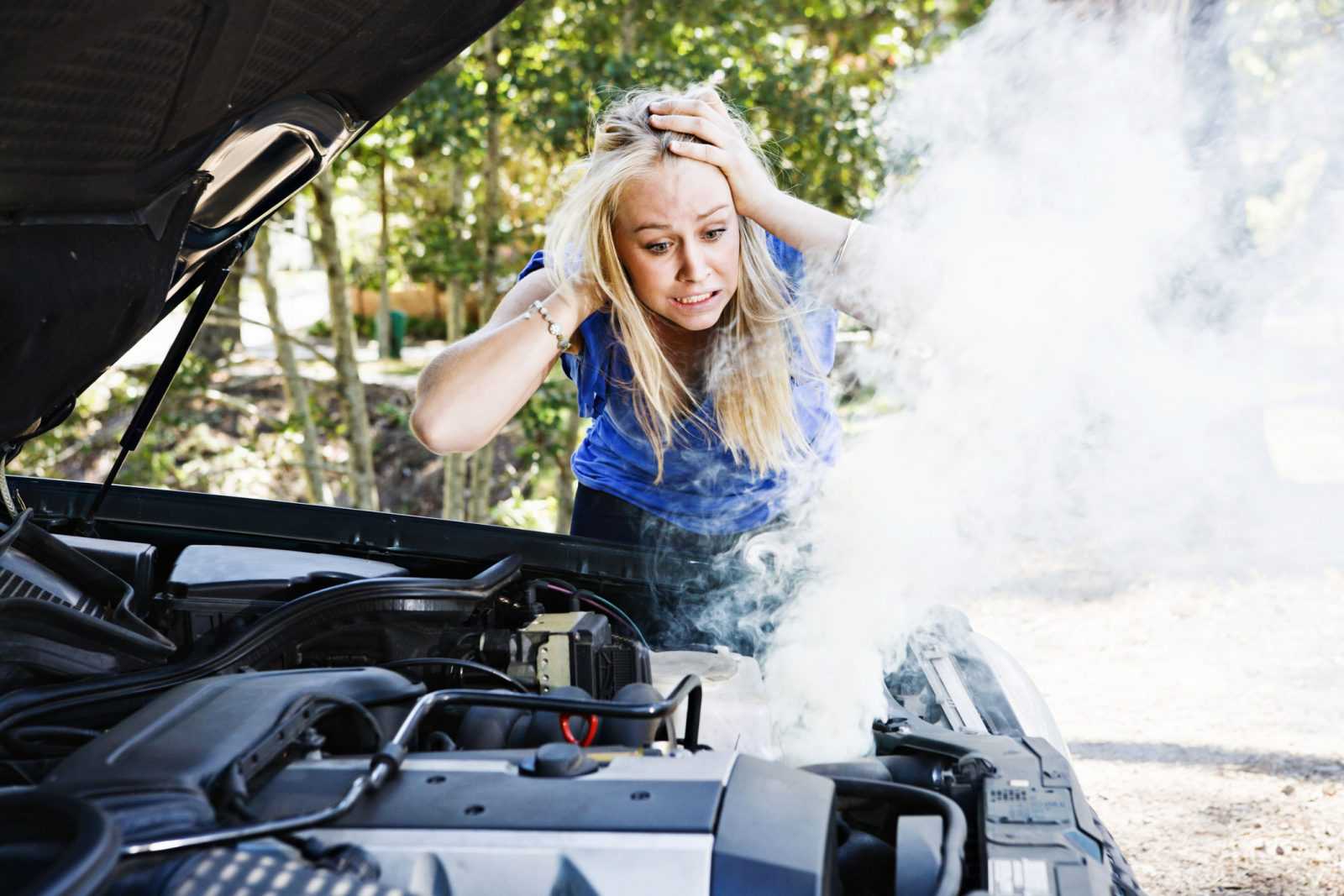
Components like rubber hoses, gaskets, and water pumps are exposed to a high degree of regular wear and tear, therefore can easily spring a leak. In addition, certain driving conditions, like stop-and-go traffic on a hot day, can put significant stress on the cooling system, causing it to fail.
As with most car issues, proper and regular maintenance is key. To minimize the chance of engine damage, it is best to avoid this problem with regular maintenance by checking your car’s coolant and oil levels and inspecting hoses, fans, the thermostat, and other parts in the cooling system.
But what do you do if your temperature gauge starts to climb toward “H” or the dashboard warning light flashes? Knowing what to do when your car overheats could mean the difference between replacing a $20 thermostat and thousands of dollars in repairs.
Signs of an Overheating Engine
There are a few common signs that you must be aware of when your car engine is beginning to overheat.
- The engine temperature gauge in the dashboard or driver console spiking to “H” or moving into the red area of the gauge.
- Steam that often looks like smoke coming from the front of the vehicle under the hood.
- Strange smells or odors emanating from the front of the car, particularly near the hood. Leaking coolant can often have a sweet smell, while oil leaks will typically produce a burnt odor.
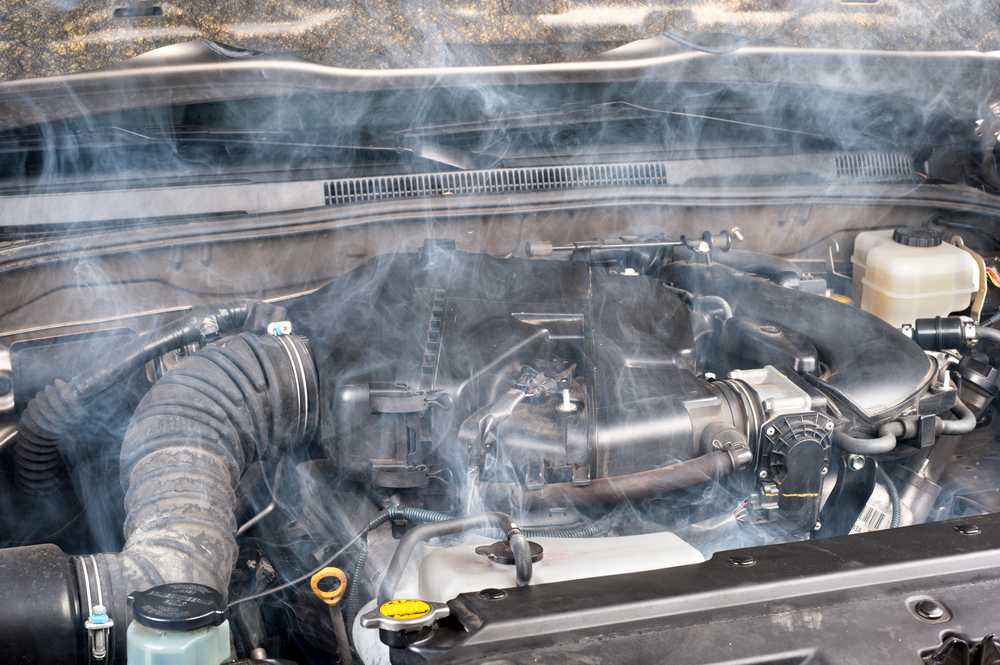
What To Do When Your Car Overheats: Tools You’ll Need
While your best bet is to get help from a mechanic, your safest bet is to be prepared. Also, you might have to drive many miles to reach the nearest auto repair shop, so knowing what to do when your car overheats will allow you to safely drive to your destination with an engine that tends to overheat.
Here is a list of items to have on hand in the vehicle if you notice that your car engine tends to overheat:
- 1 gallon of coolant (1:1 mix of antifreeze fluid and water)
- Several quarts of oil
- Heavy-duty gloves and goggles
- Towel
- A basic auto tool kit
- Working flashlight
What To Do When Your Car Overheats
When a vehicle becomes extremely hot, the dashboard temperature indicator rises. Another indication could be a turned on malfunction indicator light.
If your car overheats, do not drive more than a quarter mile. It is best to have it towed to avoid further damage to the engine. Regardless of the problem’s source, an overheating engine isn’t something you want to let linger. Your engine could sustain serious, if not permanent, damage.
What to do when your car overheats but there is no experienced mechanic or tow truck nearby? Follow these tips to help your car going back to the normal temperature:
1. Shut the A/C off & Open the Windows
Turn the air condition system off as soon as you realize that the car is overheating. It will take some load off the engine and reduce its temperature. Open the windows to quicken the process.
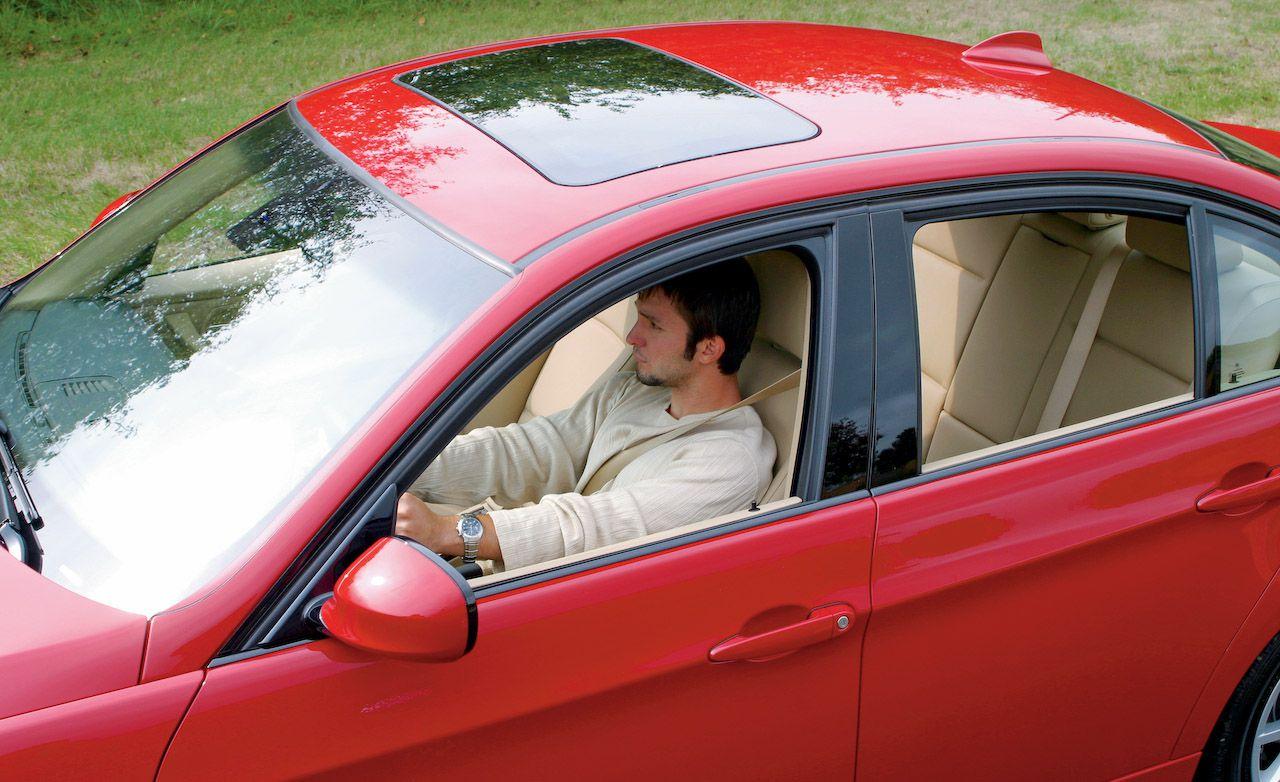
SEE MORE
2. Turn On The Heater And Blower
If shutting off the A/C does not help, switch on the heater and blower. It sounds counterintuitive, but turning on the heater draws warmth away from the engine and into the passenger compartment. This will lessen the burden on the engine’s cooling system and reduce its temperature.
You might feel like being in the desert, but your overheated engine will get relief. In certain circumstances, that may be enough to reverse the overheating. You’ll know it’s working if the warning light goes off or the temperature gauge returns to the neutral position.
3. Rev The Engine While In Idle
Another strange idea? Not so much if you know the reason. If you notice the temperature increase while in traffic, rev the engine a bit after shifting the gear to ‘Park’ or ‘Neutral’.
This process speeds up the water pump and the fan, pulling more air and water through the radiator. The boosted liquid and air circulation help cool the engine off. Another helpful tip is if you’re in stop-and-go traffic, aim to creep rather than alternating between braking and accelerating. Braking generates a lot of friction, which will only worsen the overheated engine situation.
4. Pull Over And Wait
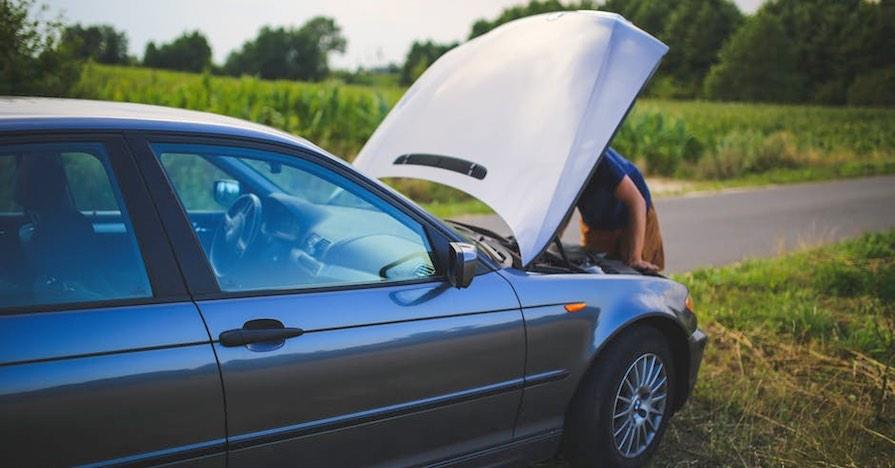
If your car continues to overheat after you’ve been driving for a few minutes with the heater on, the AC off and the windows open, pull over safely to cut the engine off. It’s the safest and surest way to cool the overheated engine.
It will take at least 15 to a good 30 minutes for the engine to cool. In the meantime, do not attempt to open the hood by hand until the engine has cooled, especially if you see steam wafting off the engine, as the coolant in an overheated engine may well exceed 230 degrees. Once the hood is open, there’s a risk of being sprayed with hot water or steam.
Don’t try to open the radiator cap to release some pressure and heat. It may cause accidents, including burning your hands. If you want to add water, wait until the engine goes back to the normal temperature.
5. Add Coolant
Engines typically overheat because the coolant’s low, so topping it off will usually solve the problem. When you have waited at least 15 minutes so that the hood is cool to the touch, it’s time to add coolant.
Note that this is only a temporary fix. Adding coolant does nothing to address the problem that caused your engine to overheat in the first place, but it often allows you to drive safely to the nearest repair station.
Put on gloves, open the hood, and locate the radiator cap. You might want to consult the owner’s manual if you are unsure where the coolant reservoir tank is. It’s usually a translucent plastic tank near the radiator.
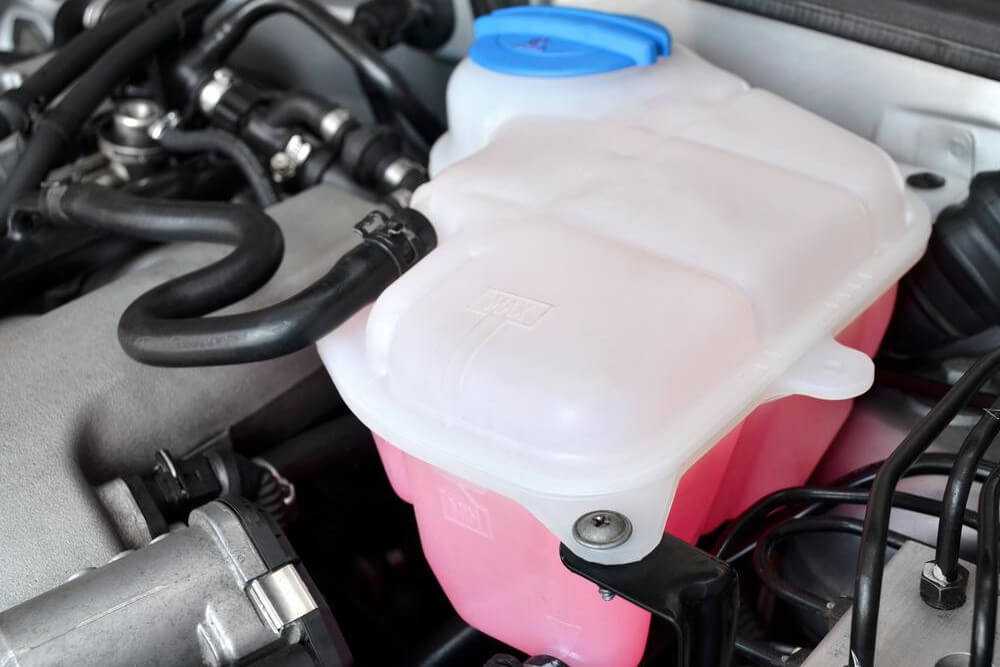
Coolant Leak
If the coolant tank is empty, you may have sprung a leak. Take a quick look under the car. If you notice a drip or puddle, chances are the coolant tank is leaking.
If the culprit is a coolant leak, you will need to refill it. Make sure the radiator cap is cool before opening it. Note that when heated, the coolant expands, leading to pressure building up. To safely remove the radiator cap, it is important to cover the cap with a towel and slowly push down and loosen it a quarter of a turn, to release the built up pressure.
Then fully open the radiator cap and slowly add coolant, a mixture of half water and half antifreeze, until the liquid reaches the “full” line. You should also add coolant to the small, clear plastic overflow reservoir mounted to the side of the radiator.
Next, replace the cap and turn on the engine. Also make sure the upper or lower radiator hose and any of the heater hoses have not been blocked, disconnected or burst.
Important safety tips:
- Do not pour cold water into a still-hot radiator. It could cause the engine block to crack due to the sudden change in temperature. If you absolutely have to add water while the engine is still warm, pour slowly while the engine is running in neutral or park.
- In addition, note that most cars require a 50/50 mix of coolant with water to prevent overheating, so you won’t be able to drive indefinitely with an overheated engine by adding nothing but water into the coolant tank. If you don’t have coolant on hand when your car overheats, make sure to add a comparable amount of coolant as soon as possible.
No Coolant Leak
Alternatively, if the coolant tank is full, the problem may be electrical or mechanical in nature. A leaking hose, worn or broken fan belt, bad water pump, or malfunctioning thermostat may be the culprit. In this case, your best course of action is definitely to request a tow to the nearest repair shop.
If the temperature gauge comes back to normal or the red warning light goes out, you can proceed with driving, but be cautious and keep an eye on the temperature gauge or warning light.
6. Drive To The Nearest Mechanic
An overheating engine is not a problem to be underestimated. The right course of action is to have a professional inspect your car’s cooling system to resolve the root cause of the problem.
While driving, keep an eye on the temperature gauge. And take notice of everything, like fluid under the car or steam under the hood. This basic information will greatly help in the diagnosis.
Bonus: Safety Tips
You already know what to do when your car overheats. But, these are the tips for what you should not do when the engine is overheated.
- Don’t drive the car more than a quarter mile. Call a mechanic or have the car towed to the nearest garage to avoid further engine damage.
- If you need to add water before the engine cools off completely, don’t rush with it. Add it slowly when the engine is on and the gear is at ‘Park’ or ‘Neutral’.
- Don’t apply brakes frequently when the engine is boiling. It makes the engine work harder and causes further damage under these circumstances. Even if you face stop-and-go traffic, just keep moving slowly without pressing on the brake pedal repeatedly.


